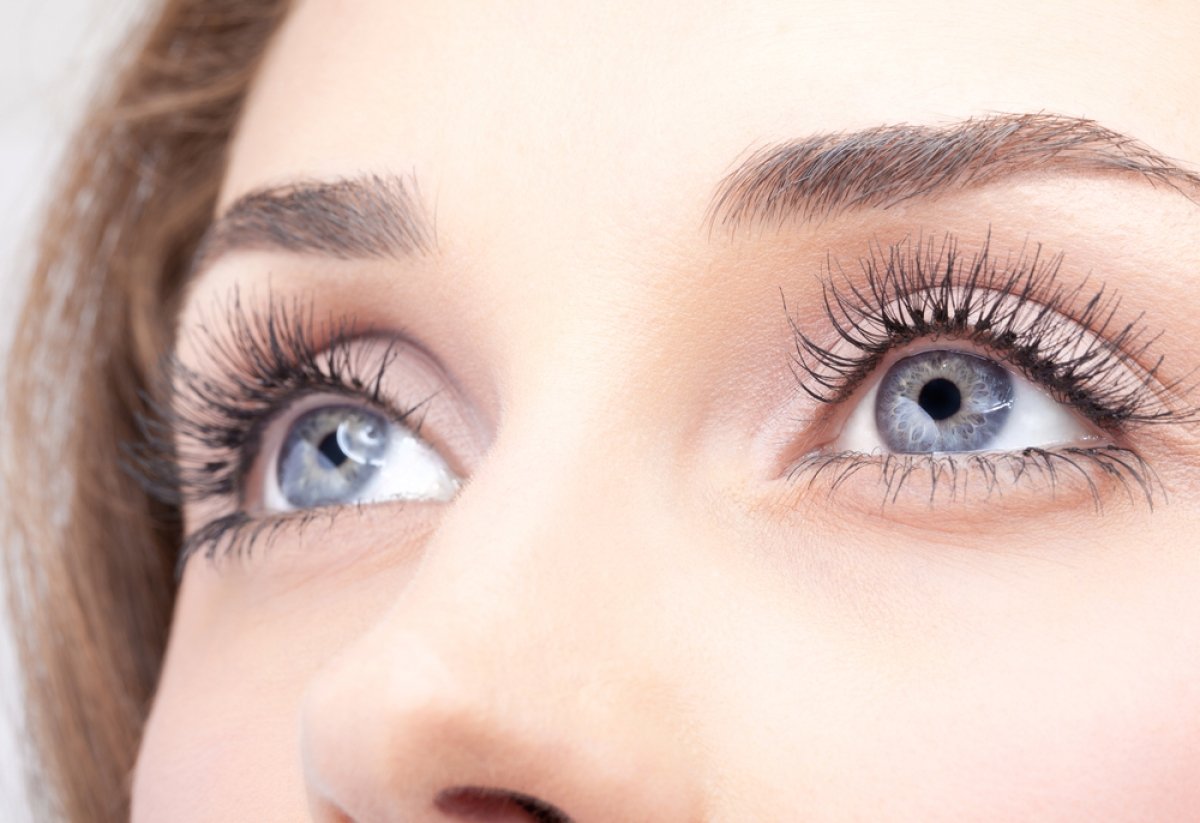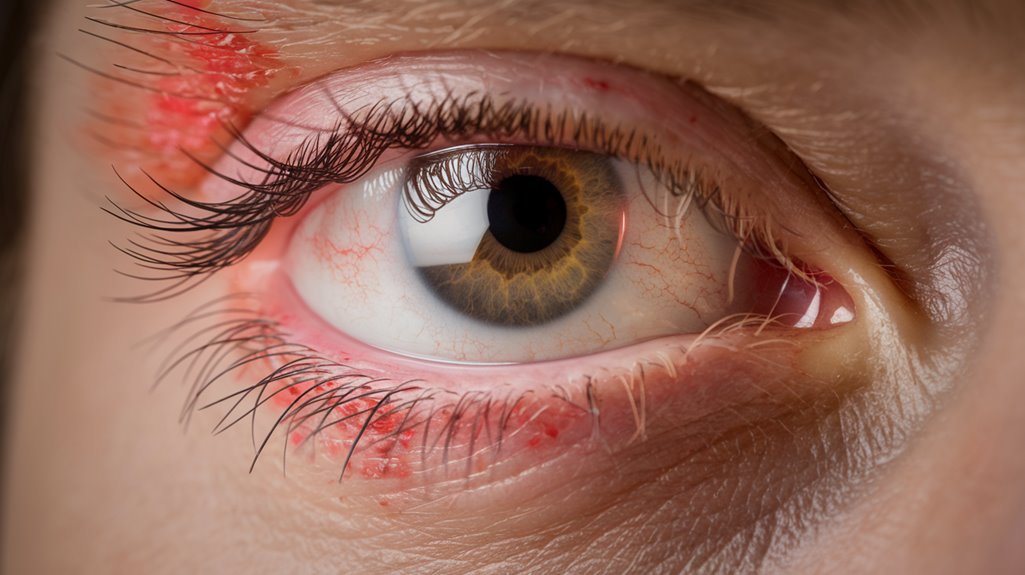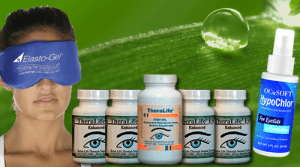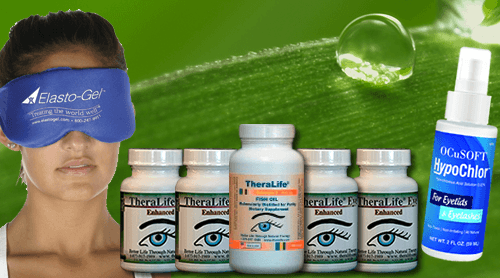Blepharitis is a common condition often caused by bacterial overgrowth or skin issues such as seborrheic dermatitis, leading to symptoms like red, itchy, or swollen eyelids. Managing this condition effectively demands consistent eyelid hygiene, which includes the use of warm compresses and lid scrubs. TheraLife.com offers a range of products that can significantly benefit individuals dealing with blepharitis by providing targeted relief and improving overall eye health. Their comprehensive approach includes both natural supplements and lifestyle recommendations that aim to alleviate symptoms and enhance eye comfort.
TheraLife’s products are designed to support eye hydration and reduce inflammation, which can be particularly beneficial for those experiencing chronic eye conditions. The products not only offer symptomatic relief but also focus on addressing underlying causes through dietary and lifestyle modifications. For instance, incorporating an anti-inflammatory diet and staying well-hydrated can complement the use of TheraLife’s supplements, leading to improved management of blepharitis.
Additionally, TheraLife’s resources provide guidance on preventative measures and home remedies, like cleaning with diluted baby shampoo or tea tree oil, offering users a comprehensive toolkit for managing blepharitis effectively. For more detailed strategies and product offerings, TheraLife’s website serves as a valuable resource for those seeking to enhance their unde
Best Blepharitis Treatment From TheraLife
Key Takeaways
- Blepharitis is an inflammation of the eyelid margins, often due to bacterial overgrowth or skin disorders like seborrheic dermatitis.
- Common symptoms include red, itchy, and swollen eyelids, along with crusty debris and persistent eye discomfort.
- Proper eyelid hygiene is crucial, involving regular cleansing with a gentle solution to manage symptoms effectively.
- Home remedies like warm compresses and lid scrubs with tea tree oil can provide relief and reduce inflammation.
- Collaboration with healthcare providers ensures accurate diagnosis, tailored treatment plans, and effective management of blepharitis.
Understanding: An Overview
Blepharitis, a prevalent ocular condition, involves inflammation of the eyelid margins, often resulting in red, itchy, and swollen eyelids.
Despite common blepharitis myths, it’s essential to understand that this condition isn’t caused by poor personal hygiene or contagious factors. Instead, maintaining proper eyelid hygiene plays a critical role in managing symptoms and preventing flare-ups.
You should regularly cleanse your eyelids using a gentle, non-irritating solution to remove debris and reduce inflammation. This proactive approach can greatly alleviate discomfort and irritation.
Evidence-based practices highlight that consistent eyelid hygiene helps minimize symptoms, though it doesn’t cure the condition. Demodex mites can also contribute to the development of blepharitis, leading to blocked meibomian glands and subsequent dry eyes.
Common Causes
You’re likely to encounter blepharitis when there’s an imbalance in the bacteria on your eyelid margins, leading to bacterial overgrowth. This condition often links to skin disorders like seborrheic dermatitis or rosacea, which can exacerbate inflammation. Understanding these connections helps in managing symptoms and preventing flare-ups effectively. Approximately 30% of chronic cases involve Demodex mites, highlighting the importance of proper diagnosis and treatment.
Bacterial Overgrowth Factors
One primary cause of blepharitis is bacterial overgrowth on the eyelids, which can lead to inflammation and irritation. When bacteria proliferate, they can result in bacterial infections that exacerbate symptoms. These infections commonly occur when eyelid hygiene is neglected, allowing bacteria to thrive. Practicing proper eyelid hygiene is essential for managing bacterial overgrowth effectively. You should clean your eyelids regularly with gentle cleansers to minimize bacterial presence. Studies show that maintaining eyelid hygiene can markedly reduce the risk of blepharitis-related complications. In addition, certain bacteria, such as Staphylococcus species, are frequently implicated in these infections, highlighting the importance of targeted hygiene practices.
Skin Condition Links
While bacterial overgrowth is a well-known contributor to blepharitis, skin conditions can also play a crucial role in its onset. Conditions like rosacea and seborrheic dermatitis often exacerbate eyelid inflammation. If you have skin allergies, they may trigger or worsen blepharitis symptoms by causing itchiness and redness. Environmental factors, such as exposure to allergens or pollutants, can also contribute to skin irritation, further impacting the eyelids. It’s vital to manage these underlying conditions to alleviate blepharitis symptoms effectively. Identifying triggers and minimizing exposure to allergens can considerably reduce flare-ups. Inflammatory cytokines such as IL-1beta, TNF-alpha, and IL-8 are known to be involved in the inflammatory processes of blepharitis, exacerbating symptoms and complicating treatment. Consult with a dermatologist or ophthalmologist to tailor a treatment plan that addresses both skin and ocular health, ensuring thorough management of blepharitis linked to skin conditions.
Recognizing the Symptoms of Blepharitis
You may notice common indicators of blepharitis such as red, swollen eyelids and crusty debris at the base of your eyelashes. Identifying symptoms like persistent eye discomfort, including burning or itching, can be essential in managing this condition. Additionally, recognizing any visual changes, such as blurred vision, helps in early intervention and treatment. It is recommended to avoid eye makeup during active blepharitis to prevent irritation and facilitate eyelid hygiene.
Common Indicators
Blepharitis, a common eye condition, often presents with a variety of symptoms that can affect your daily comfort and vision.
You might notice redness and swelling at the eyelid margins, often accompanied by crusting or scaling. These symptoms can result from various blepharitis triggers like bacterial infections or skin conditions.
Maintaining proper eyelid hygiene is essential in managing these symptoms and preventing their recurrence. Regularly cleaning your eyelids with a gentle scrub can help remove debris and excess oil that exacerbate irritation.
You may also experience a gritty sensation, similar to having sand in your eyes, and increased tear film instability, which can lead to blurred vision.
Recognizing these indicators enables you to seek appropriate treatment promptly. Chronic blepharitis can also lead to corneal damage and vision loss if left untreated, underscoring the importance of early intervention.
Identifying Eye Discomfort
Understanding the subtle and overt signs of eye discomfort can empower you to address blepharitis effectively. Eye strain often accompanies this condition, manifesting as a persistent, burning sensation.
It’s essential to distinguish these symptoms from common allergy symptoms, which might include itching and redness. Blepharitis frequently presents with crusty eyelids, irritation, and a gritty feeling, unlike typical allergic responses.
Another indicator is eyelid swelling, which can exacerbate discomfort and lead to further complications if ignored. You might also experience excessive tearing or dryness, which contributes to eye strain.
Identifying these symptoms early enables you to seek appropriate care, reducing the risk of chronic inflammation. A healthcare professional can guide you in differentiating between blepharitis and other eye issues, ensuring precise management strategies. Regular eye check-ups can be crucial for detecting early signs of dry eye syndrome and maintaining overall eye health.
Recognizing Visual Changes
When dealing with blepharitis, recognizing visual changes early can greatly impact your management of the condition. You may notice a decline in visual clarity, which can manifest as blurred vision or difficulty focusing on objects. This is often due to the inflammation affecting the tear film, leading to increased eye strain. Pay attention to persistent symptoms like redness, sensitivity to light, and frequent blinking, as these can further strain your eyes. Evidence suggests that addressing these symptoms promptly can prevent further complications. Consider using warm compresses and artificial tears to alleviate discomfort and maintain peak eye health. Omega-3 fatty acids offer anti-inflammatory benefits that can help improve symptoms, making them a valuable addition to your treatment regimen. If symptoms persist, consult an eye care professional for a thorough evaluation and tailored treatment plan to preserve your vision and improve your quality of life.
Diagnosis
How do healthcare professionals diagnose blepharitis with accuracy? They begin with a thorough patient history, exploring symptoms and any underlying conditions that might contribute to eyelid inflammation. By understanding your medical background, doctors can better differentiate blepharitis from other ocular ailments. During the examination, practitioners perform a differential diagnosis, carefully distinguishing blepharitis from conditions like conjunctivitis or dry eye syndrome. This involves a meticulous inspection of your eyelids, lashes, and the tear film using slit-lamp biomicroscopy. They may take eyelid scrapings to identify bacterial or fungal involvement. Accurate diagnosis is vital, as it informs the treatment plan and guarantees relief from symptoms. By collaborating with your healthcare provider, you can actively participate in managing your eye health. Additionally, understanding the chronic nature of blepharitis helps in setting realistic expectations for management and prevention strategies.
Effective Treatment Options
Blepharitis can be managed effectively through a combination of targeted treatments and lifestyle adjustments, ensuring relief and improved eye health.
Essential to treatment is meticulous lid hygiene. Regularly clean your eyelids with a warm, damp cloth or commercially available lid wipes to remove debris and reduce bacterial load. This practice helps alleviate symptoms and prevent recurrence.
In more severe cases, prescription treatments may be necessary. Your eye doctor might recommend antibiotic ointments or drops to address bacterial infections, or prescribe anti-inflammatory medications to reduce swelling.
Adhering to these medical regimens can greatly improve symptoms. Always consult your healthcare provider for tailored advice, as they can adjust treatments based on your specific condition and response to initial therapies.
Incorporating omega-3 fatty acids into your diet has been shown to reduce inflammation associated with blepharitis, promoting better meibomian gland function and tear film health.
Home Remedies and Lifestyle Adjustments
While managing blepharitis, integrating home remedies and lifestyle adjustments into your routine can greatly enhance symptom relief.
Start with warm compresses as a natural treatment to soften crusts and improve eyelid hygiene. Use a clean, warm cloth, applying gentle pressure to your eyelids for several minutes daily.
Incorporate eyelid scrubs using diluted baby shampoo or tea tree oil, known for its antimicrobial properties.
Dietary changes are also beneficial; consider increasing omega-3 fatty acids, found in fish or flaxseed oil, which may reduce inflammation.
Stay hydrated and limit caffeine and alcohol intake, as they can exacerbate symptoms.
Prioritize good sleep hygiene and manage stress, both of which contribute to overall eye health.
These evidence-based strategies collectively promote relief and improve quality of life.
Preventative Measures to Reduce Flare-ups
To effectively reduce blepharitis flare-ups, it’s crucial to adopt a proactive approach centered on consistent eyelid hygiene and environmental awareness.
Implementing daily hygiene practices, like warm compresses and eyelid scrubs, can help remove debris and reduce bacterial load. Additionally, consider dietary adjustments to support overall ocular health. Omega-3 fatty acids, found in fish oils, may decrease inflammation and promote tear production, which can mitigate symptoms.
Environmental factors, such as exposure to allergens or irritants, should be minimized to prevent exacerbation. Regular cleaning of contact lenses and makeup tools guarantees they don’t harbor bacteria.
Staying hydrated and managing stress levels also contribute to eye health. By maintaining these preventive strategies, you can effectively manage blepharitis and enhance your quality of life.
Frequently Asked Questions
Can it Cause Long-Term Damage to the Eyes?
Think of blepharitis as a persistent storm cloud over your eyes. This chronic inflammation can indeed cast shadows, leading to potential long-term issues like vision impairment.
If left untreated, the storm worsens, possibly causing scarring or eyelid deformities. Research shows that addressing symptoms early, through prescribed treatments, can prevent these complications.
Maintaining eyelid hygiene is your shield, ensuring the storm doesn’t linger. Always consult your eye specialist for personalized advice.
Are There Any Dietary Changes That Can Help Manage blepharitis ?
You’re wondering if dietary changes can help manage blepharitis. Yes, incorporating anti-inflammatory foods like salmon, walnuts, and flaxseeds into your diet can reduce symptoms.
Omega-3 fatty acids, found in these foods, may decrease eyelid inflammation. Additionally, consider dietary supplements such as fish oil capsules.
Studies suggest these supplements help improve tear quality and eyelid health. Always consult your doctor before making significant dietary changes to verify they’re safe for you.
How Does Blepharitis Affect Contact Lens Wearers?
If you wear contact lenses, blepharitis can make it challenging due to symptoms like irritation and dryness.
It’s essential to practice excellent contact lens hygiene to minimize discomfort.
Blepharitis symptoms, such as crusting and inflammation, can worsen with improper lens care, potentially leading to infections.
Make sure you clean lenses regularly and replace them as recommended.
Consulting an eye care professional can provide evidence-based advice tailored to your needs, improving your comfort and eye health.
Can Children Develop Blepharitis, and How Is It Managed Differently?
Yes, children can develop blepharitis, and recognizing childhood symptoms early is essential.
You might notice red, swollen eyelids or crusty eyelashes. Management strategies differ slightly from adults. Focus on gentle, evidence-based care, like warm compresses and eyelid hygiene.
Use pediatric-approved wipes or diluted solutions for cleaning. It’s important to consult a pediatric ophthalmologist to tailor treatment, ensuring comfort and preventing long-term complications.
Always prioritize your child’s eye health with professional guidance.
Is Blepharitis Related to Other Eyelid or Skin Conditions?
When it rains, it pours. Blepharitis can be a companion to other conditions like rosacea or eyelid dermatitis.
You might notice inflammation not only in the eyelids but also on your skin, linking these conditions. Evidence shows that managing underlying skin issues can alleviate blepharitis symptoms.
It’s essential to consult with your healthcare provider to tailor a treatment plan addressing both blepharitis and any related skin conditions, ensuring thorough care.
Conclusion
Blepharitis can be likened to an unforeseen storm cloud shadowing the clear skies of your eye health. Just as you would prepare an umbrella for an impending rainstorm, it’s crucial to arm yourself with knowledge and effective tools to tackle this condition. Theralife.com offers a comprehensive range of products designed to benefit those suffering from blepharitis and related eye conditions. Their solutions are crafted to alleviate symptoms and promote eye health through natural ingredients and dietary supplements, providing a holistic approach to eye care. By integrating Theralife products into your routine, you can make lifestyle adjustments and adopt preventive practices that lead to clearer, healthier horizons. Remember, you are the captain of your own ship, steering toward improved eye health with the assistance of Theralife. Don’t let blepharitis cloud your vision; take charge and sail ahead with confidence.





